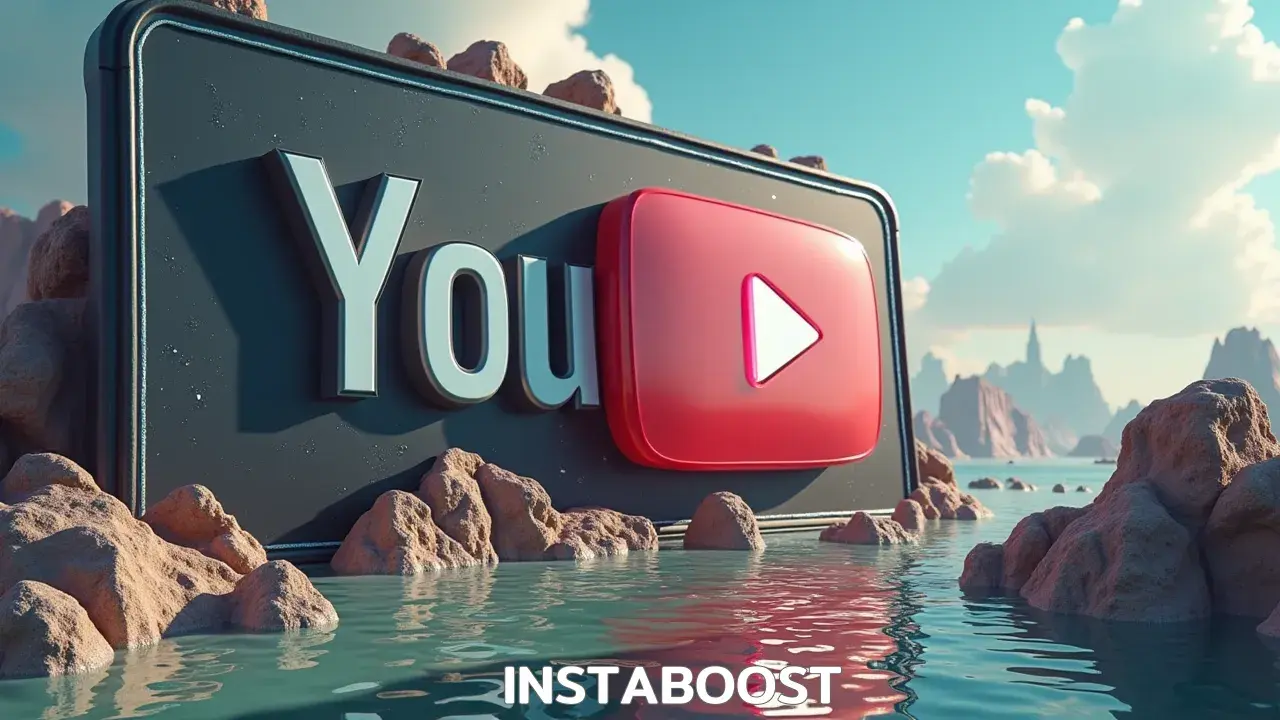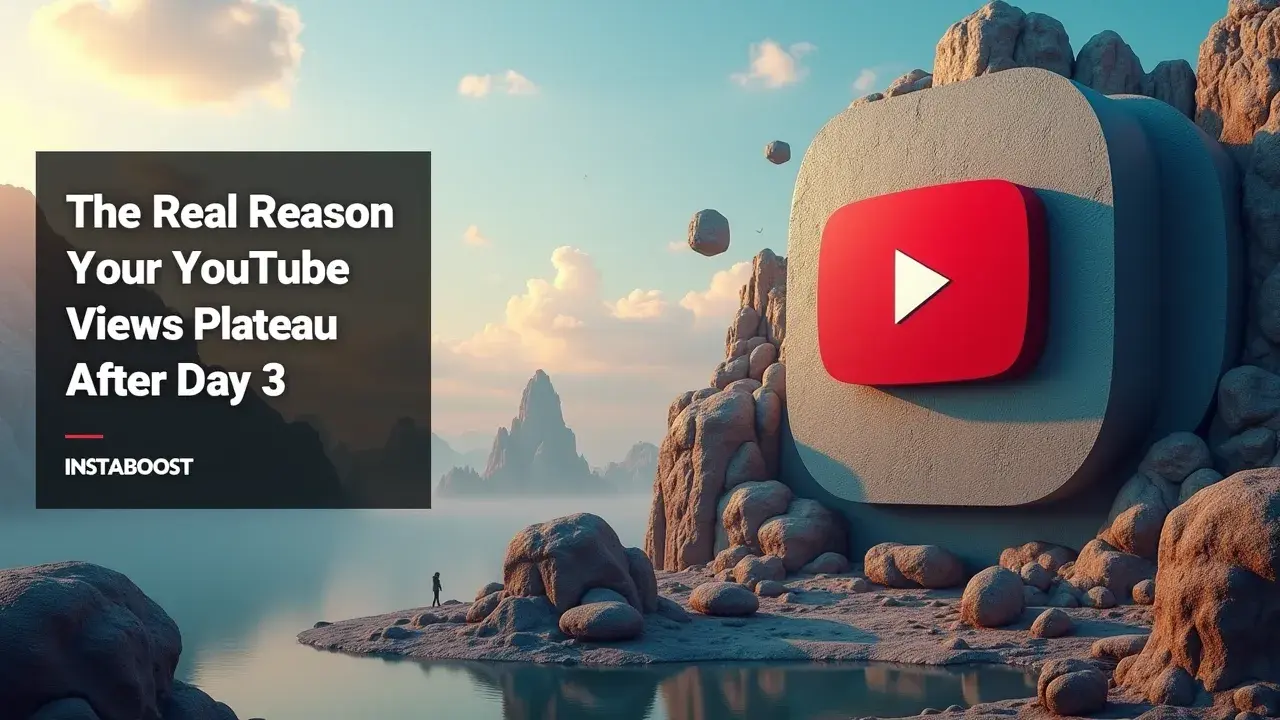What Explains Youtube Views Plateauing After Day 3?
View counts often level off after three days because initial distribution peaks and algorithmic momentum normalizes. Early engagement, click-through rate, and watch time drive exposure, and when these signals taper, recommendation velocity slows. Overlooked factors like audience overlap, timing of publication, and limited topical freshness can further constrain reach. Focusing on stronger early signals and aligning topics with viewer intent can extend the curve and sustain incremental growth.
Why YouTube Views Surge – Then Suddenly Stall
When you upload a new video to YouTube, those first three days can feel intense. Notifications start coming in, views go up quickly, and every time you check the dashboard, there’s something new to notice. And then, almost as suddenly, things slow down. The graph levels out, and it’s easy to wonder if you did something wrong, or if YouTube’s system is working against you.
But this is pretty typical for how YouTube treats new uploads. At first, it tries to show your video to people who are most likely to care – your subscribers, or people who often watch similar channels. This early push is your chance to reach viewers who already have some interest, but it doesn’t last long.
Once YouTube sees how your video is performing – looking at things like how many people click, how much they watch, and whether they engage – it usually shifts focus elsewhere, unless your video is doing unusually well. That’s why a lot of creators notice their numbers stall out after a few days, even if the video is solid. It’s not a personal failure; it’s just the way the system works to decide which videos move past your usual audience.
For anyone working on a channel, or for brands like INSTABOOST, noticing these patterns helps set better expectations. Sometimes it’s just a matter of timing and small improvements, like figuring out new ways to enhance your YouTube profile, that can give your videos a better chance over the long run. It makes it a little easier to adjust your approach, knowing the landscape is always changing and the first burst of activity isn’t the only thing that counts.
For anyone working on a channel, or for brands like INSTABOOST, noticing these patterns helps set better expectations. Sometimes it’s just a matter of timing and small improvements, like figuring out new ways to enhance your YouTube profile, that can give your videos a better chance over the long run. It makes it a little easier to adjust your approach, knowing the landscape is always changing and the first burst of activity isn’t the only thing that counts.

Why the Algorithm’s First Impression Matters More Than You Think
From what I’ve seen, every YouTube creator who gets past that stuck point seems to share something in common: they actually take the time to understand how YouTube works in those first few days after uploading, especially those first 72 hours. It’s not about guessing or following vague advice – they pay attention to how the algorithm responds, watching things like how often their video gets clicked, how long people watch before dropping off, and whether viewers stick around past the halfway mark. By the end of the third day, YouTube has enough information to decide whether to show the video to more people, or let it slip out of view.
Those early numbers aren’t just stats – they’re really the clearest clues you’ll get about how far your video might reach. A lot of people get frustrated and focus on things like tweaking thumbnails or chasing trends, hoping for a quick fix, but miss the part about making videos people actually want to watch through to the end or that offer something useful. YouTube is mostly looking for videos that hold attention, not just ones that get a quick click. That’s why you sometimes see smaller channels suddenly take off – their videos end up matching what the algorithm is looking for, even if the creator didn’t plan it that way. Tools like INSTABOOST can sometimes help with engagement in those early days, and it’s also interesting how some people manage to strengthen your YouTube community almost by accident, just by focusing on what interests viewers. But honestly, it mostly comes down to whether the video keeps people interested. When you start looking at your analytics with this in mind, the reasons behind a plateau start to feel less random. It’s more like the numbers are showing you, in plain terms, what’s working with viewers and what isn’t.
Stop Waiting for a Miracle Spike – Plan Your Next Moves
If everything has to go perfectly for your plan to work, it’s not much of a plan. Once that rush of YouTube views slows down after a few days, that’s really when things start. The creators who manage to keep making progress aren’t relying on another lucky bump from the algorithm – they’re thinking about what to do next. A useful place to start is by looking closely at your analytics. Where did your viewers actually come from? Was it notifications, suggested videos, search?
Did they drop off halfway through? This tells you more than the view count ever could. For example, if most of your views came from notifications but almost none from suggested or browse, it’s a sign your video isn’t reaching new people yet.
Instead of worrying about the slowdown, you can focus on something practical, like updating your thumbnail, changing the title, or leaving a pinned comment to encourage some discussion. Sometimes linking this video in your next upload or including it in your channel trailer can help keep it alive a bit longer. You might notice, too, that certain videos tend to drive engagement with likes more than others, which can nudge the algorithm to show them to a broader audience. These are the kinds of small steps that show you’re paying attention and adjusting, instead of hoping the algorithm will do it all. YouTube seems to notice when you keep pushing your videos forward, even in small ways. The steady effort matters more than waiting for the next big spike. If something is holding your video back, this is the time to try fixing it and see what happens from there.
Why “Algorithm Fatigue” Isn’t the Whole Story
I don’t think it’s cynical to feel this way – I’m just worn out from watching the same thing happen again and again. As soon as a YouTube video’s views start to slow down after a few days, people immediately point to the algorithm, like it’s some unpredictable judge deciding who gets a chance. But honestly, that story feels tired.
The algorithm isn’t personally setting anyone back or randomly picking what takes off. Most of the time, what’s really going on is that a video gets seen by the people who usually watch that channel, and after that, it needs to connect with new folks to keep growing. If the thumbnail or title or even the topic itself doesn’t make sense to someone who’s never heard of you, then the video probably won’t go much further – YouTube is just showing you how far your reach actually goes. It’s not that the algorithm is losing interest; it’s that you’re running out of viewers for now. If you look at channels that keep growing, their videos tend to have something that reaches people outside the usual circles.
They don’t rely on luck or secret tricks – they try different things with their titles, topics, and thumbnails to see what catches interest from people who aren’t already subscribers. That’s why tools like INSTABOOST can help – not as a magic bullet, but as a way to experiment and see what helps get noticed with more views after that first wave has passed. It ends up being less about cracking some code, and more about figuring out what makes someone unfamiliar want to click.
Harnessing the Plateau: Let Your Curiosity Set the Next Trend
When something in your video gets a reaction, it’s worth noticing what that feels like. If the initial excitement drops off after a while, that doesn’t mean it’s time to walk away. Sometimes, that’s actually when you’re ready to try a different approach. A lot of people see their YouTube views flatten out and worry they’ve already peaked.
But the smaller channels that end up leading the way, especially as trends shift, don’t see a plateau as the end. They start looking more closely at what actually caught people’s attention. Was there a part of the video that got people talking in the comments? Did someone share a clip on Shorts because it made them laugh, or did a strong opinion get people going back and forth? Slowdowns like this can be useful, pointing out where your video connected and where it could be better. You might notice, too, how effective YouTube reposts can give things a second life if they land in the right place.
So, you might decide to edit a section, change the thumbnail, or try a new direction based on what viewers noticed. Figuring out YouTube’s system isn’t something you can force, but if you let your curiosity lead the way, the pressure to perform loses some weight. That’s when a video that seemed stuck can give you ideas for what to try next.
And if you use something like INSTABOOST, it helps to remember it’s there to support what you’re already working on, not to stand in for your own ideas – that first spark still comes from you. Sometimes, it’s as simple as asking yourself what would actually make you click again, and following that, even if the numbers aren’t moving much. The people who end up making something different are usually the ones still paying attention, even when things get quiet.
What Happens After Day 3: The Quiet Power of Iteration
When views on a YouTube video slow down after those first few days, it’s easy to feel like the momentum is gone. But I’ve found that the lull is actually a chance to step back and look at what’s really happening. The patterns are there if you look: who stuck around until the end of the video, when people clicked away, what came up in the comments. Instead of letting the slowdown get discouraging, it helps to check out the audience retention graph, see what feedback people left, and start thinking about small changes – maybe trying out a new thumbnail, reworking the title, or editing a short clip from the original to post separately.
Even people with smaller channels are starting to use these quiet stretches to experiment with different formats or try tools like INSTABOOST to get a bit more traction; it reminds me of how some creators end up stumbling on a comprehensive YouTube solution almost by accident, just by following their curiosity. What feels like a dead spot is often just a break before something starts up again, and the folks who take the time to notice what’s working or not tend to figure out their next step, even if it takes a while. If you treat the slowdown as a regular part of making videos rather than a failure, those first few days of excitement can become the foundation for something steadier, and maybe even more visible, as things keep shifting around.















